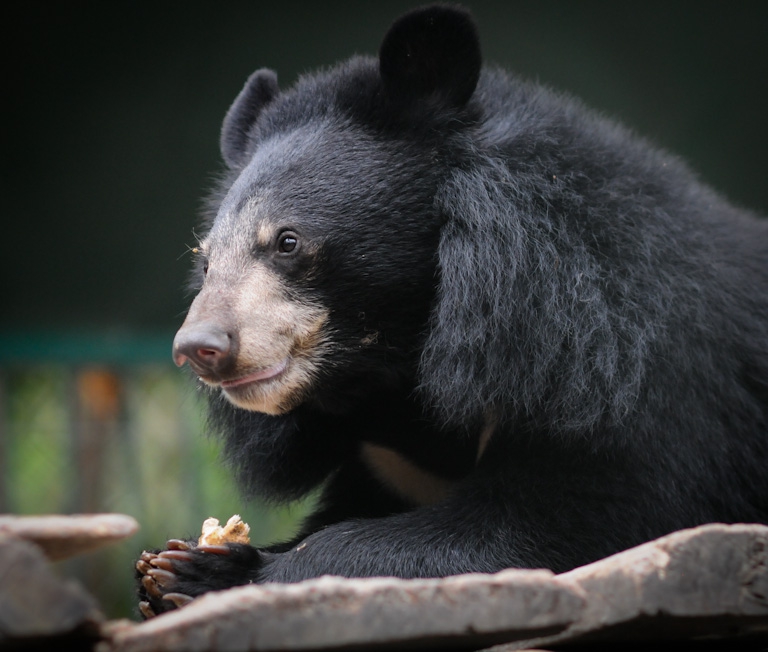This is part II of III on the use of animals for entertainment and the freedom of expression
What the Courts Have Said….
Ontario municipal by-laws attempting to regulate the keeping of exotic animals within municipal boundaries have been the subject of numerous court challenges. Many of these cases resulted in the by-laws being struck down by the courts. Despite the similar outcomes, there is a lack of consistency in the judicial reasoning that lead to these by-laws being struck down. This has made the current state of the law confusing, to say the least.
Stadium Corp of Ontario v Toronto
In Stadium Corp of Ontario v Toronto, [1993] 14 MPLR (2d) 229, the Ontario Court of Appeal (“ONCA”) struck down the City of Toronto’s by-law, which prohibited circuses and other similar shows exhibiting exotic animals from performing within the City, subject to exceptions for films and other educational activities. The decision of the ONCA overturned the application judge’s holding, who found the By-law to be validly enacted.[1] Briefly stated, the ONCA concluded that the legislature did not intend to grant municipalities statutory authority under the Municipal Act, RSO 1990, c M.45 (“Municipal Act (1990)”) to control the conduct of circuses.
Beyond the issue of statutory authority, the plaintiffs also alleged that the By-law infringed their freedom of expression under section 2(b) of the Canadian Charter of Rights and Freedoms. At trial, the application judge dismissed the section 2(b) challenge, stating that there was no evidence to show that the public display of exotic animals amounted to “expression” within the meaning of section 2(b).[2] The ONCA, however, did not address the constitutional issue. In refraining from dealing with the complexity of the Charter, the ONCA relied on a Supreme Court of Canada decision, stating that “constitutional issues should not be addressed unless required for the resolution of the issues.”[3]
By deciding not to address the freedom of expression issue, the decision of the ONCA provides us with little assistance. Furthermore, the fact that the decision was made pursuant to the old Municipal Act (1990), which granted municipalities narrow and restrictive powers, limits the holding’s applicability to a similar by-law enacted under the new Municipal Act, SO 2001, c 25.
Xentel DM Inc v Windsor (City)
In Xentel DM Inc v Windsor (City), [2004] 50 MPLR (3d) 165, Justice Gates of the Ontario Superior Court of Justice, struck down a Windsor by-law which prohibited entertainment involving exotic animals. The stated purpose of the impugned By-law was to protect the public from safety concerns in relation to exotic animal performances. Perhaps due to a lack of evidence before the Court, Gates J. was not convinced that there was any connection between exotic animal performances and issues of public safety.
In striking the By-law, Gates J. raised a number of procedural concerns, stating that the By-law was enacted with a lack of good faith, was discriminatory in its application and violated the principles of fairness. The Court reasoned that the By-law was in pith and substance about animal welfare and not about concern for public safety. The Court also held that the By-law was an encroachment of section 91(27) criminal law power, as an attempt to regulate public morality.
Lastly, but perhaps most importantly, Gates J. held that the By-law violated section 2(b) freedom of expression, finding that circus performances involving animals constitute a form of protected expression. Although the Ontario Divisional Court in Stadium Corp of Ontario v Toronto came to a different conclusion on this same matter, Justice Gates refused to follow the reasoning of the Divisional Court, because the ultimate result was overturned by the ONCA (despite the ONCA refusing to rule on the 2(b) issue).
In determining whether or not the section 2(b) violation could be saved by section 1 of the Charter, Gates J. held that the By-law was based on irrational considerations and therefore had no rational connection to its stated objective. He also held that by failing to consider actual evidence of injury resulting from the use of exotic animals, the ban did not minimally impair the applicants’ freedom of expression.
In his Charter analysis, Gates J. arguably misapplied the law. Specifically, he found that the By-law’s purpose was to restrict expression. With respect, I would suggest that the purpose of the By-law, according to Gates J.’s pith and substance analysis, was to protect the welfare of the animals. Accordingly, if there was a section 2(b) infringement, it was due to the effect of the law and not its purpose. This distinction is important because it adds an additional legal burden on the applicant, necessitating that they prove that the meaning conveyed by their expressive activity is tied to the pursuit of truth, democratic participation, or self-fulfillment/human flourishing. [4]
Ketola v Belmont and Methuen (Townships)
In Ketola v Belmont and Methuen (Townships), [1997] 42 MPLR (2d) 78, the application was brought forward by the operator of a Centre for the Conservation of Specialized Species, to quash By-law 1997-07, which prohibits or regulates the keeping of certain animals within the Townships of Belmont and Metheun. The By-law was passed after the Townships received a number of complaints regarding the presence of a tiger and a lion within the boundaries of the respective townships. The By-law was attacked on procedural grounds, as well as on the ground that it infringed the applicant’s freedom of expression.
In dismissing the application, the Ontario Court of Justice, held that there were no procedural defects in the passing of the By-law. Furthermore, the Court held that Ketola failed to show that the keeping and breeding of endangered species was a form of expression within the meaning of section 2(b). The Court stated that there was insufficient evidence to determine whether or not the activity, meaning or expression fell within the protected sphere of section 2(b). In addition, the Court held that the applicant did not show how their stated expression was linked to the principles enumerated in Irwin Toy, i.e. the pursuit of truth, democratic participation, or self-fulfillment/human flourishing. Justice Murphy also noted that the section 2(b) analysis in Stadium Corp of Ontario v Toronto Divisional Court remains good law.[5]
Finally, the applicant argued that the By-law was an attempt to regulate morality, and therefore infringed upon federal criminal law power. In dismissing this argument, the Court noted that the By-law was not an attempt to regulate the exhibition of animals or control cruelty to animals. Instead, the Court found that they By-law simply prohibits and regulating the keeping of animals within the municipality, as authorized by the Municipal Act, 1990.
Southwold (Township) v Buwalda
In Southwold (Township) v Buwalda, [2006] 24 MPLR (4th) 54, the Ontario Superior Court of Justice (“OSCJ”) struck down a by-law prohibiting the captivity of “wild animals” within the town of Southwold on the grounds that the impugned By-law was: (1) passed by Council who did not exercise due diligence in researching the prohibition; (2) too broad and did not define all the animals it intended to prohibit; and (3) the terms of implementation of the prohibition were are not fair or equitable and do not deal appropriately with individuals with existing wild animals.
After the release of this decision, Southwold wrote a letter to a number of Ontario municipalities as well as the provincial government, requesting that something be done about the lack of laws regulating the keeping of exotic animals in Ontario. Southwold expressed their concern about the uncertainty that any action on their part would be able to withstand judicial scrutiny.
Although the impugned By-law in this case was passed under the new Municipal Act, the Court’s main issues with the By-law were the procedural circumstance surrounding its enactment as well as particular drafting concerns. These problems are unique to this specific By-law and arguably do not affect the jurisdiction of other Ontario municipalities to enact similar by-laws.
What These Decisions Mean…
The differences in judicial findings and reasoning, in addition to the enactment of the new Municipal Act, make the legality of well drafted future by-laws which attempt to regulate the use of exotic animals for entertainment purposes, promising.
Particularly, amendments to the Municipal Act and the City of Toronto Act grant all Ontario municipalities much broader powers in regards to animals. Under the old version of these statutes, municipal jurisdiction over animals was limited to dealing with nuisance related issues, as well as some issues concerning public safety.
In the face of conflicting decisions regarding the application of section 2(b) freedom of expression analysis, the question remains: is the use of animals for entertainment purposes protected by the Charter?…
(This is Part II of III on the use of animals for entertainment and the freedom of expression.)
Written by Zeynep Husrevoglu, BA, LLB-Articling Student
This blog and the contents herein are for informational purposes only and do not constitute legal advice. Readers are advised to seek legal counsel prior to acting on any matters discussed herein.
End Notes:
[1] Stadium Corp of Ontario Ltd v Toronto (City), 10 OR (3d) 203.
[2] Ibid.
[3] Stadium Corp of Ontario v Toronto, [1993] 14 MPLR (2d) 229 at para 3.
[4] Irwin Toy Ltd v Quebec (AG), [1989] 1 SCR 927.
[5] Ketola v Belmont and Methuen (Townships), [1997] 42 MPLR (2d) 78 at para 33.




